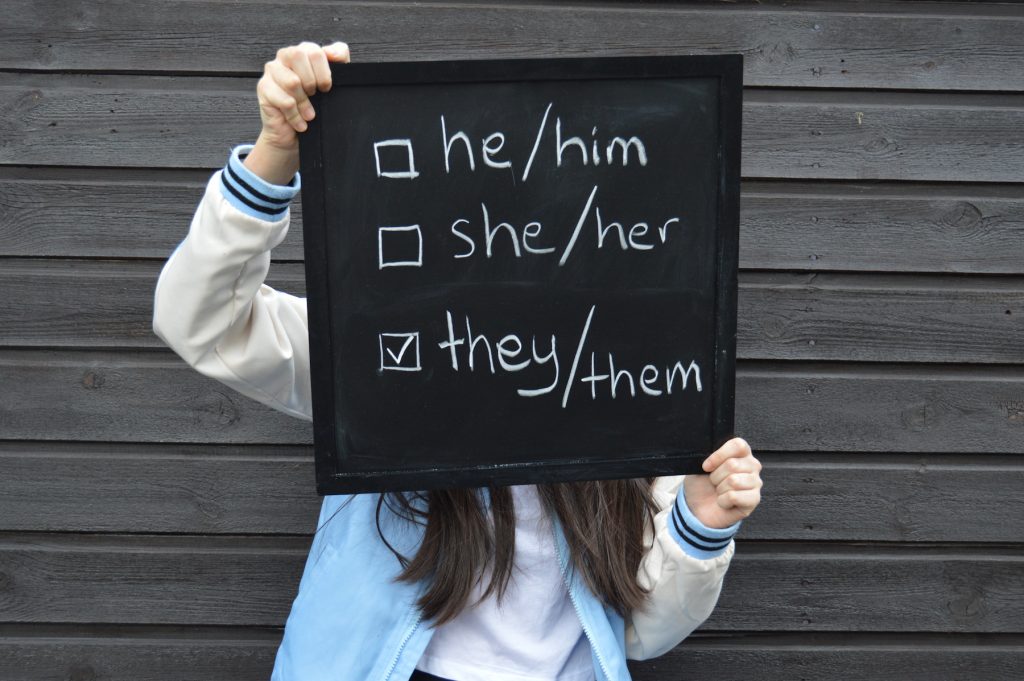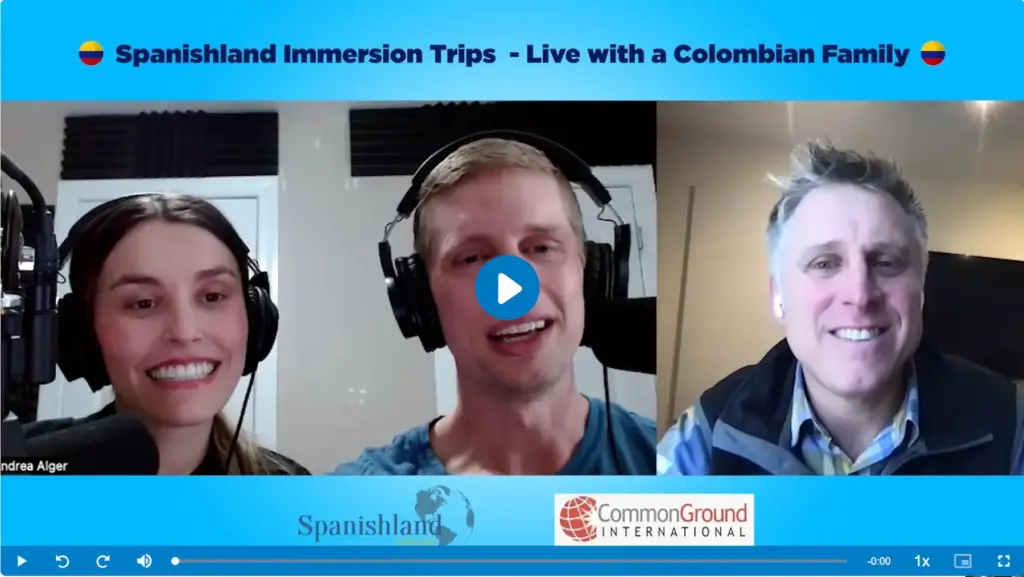Is it common practice to use the pronoun “elle” and change adjectives to end in an “e”?
Hi Rory, my name is Phoenix. I’m non-binary and I’m registered for your upcoming immersion trip… I use the pronouns they/them on a daily basis; what should I expect from the local community in regards to pronoun use?
In the summer of ’23 Common Ground had the privilege of working with 4 non-binary travelers on our Spanish Immersion Trips in Ecuador and Costa Rica. All 4 use, and are commonly addressed with, they/them pronouns (and elle in Spanish speaking settings) within their home communities. They were hoping that the use of “elle” during their travels abroad would be common as well.
As we lived through daily interactions and conversations with locals in both Ecuador and Costa Rica, it became abundantly clear that the use of non-binary pronouns is a lot less common, regardless of gender identity, sexual orientation, etc. Very few people we came in contact with across all demographics: queer, straight, well-educated, less-educated, etc had experience using non-binary language in Spanish.
In an effort to understand if the limited use of elle, etc was motivated by a hostility toward non-binary people or not, Marykate (one of our medical Spanish immersion trip leaders) and I decided to do a little investigation. We were short on time, and limited within our own network of people to interview, so we sat down with Silvia and Maria Fernanda. They are a lesbian couple and a long-time host family for our immersion travelers in Costa Rica.
Here is the conversation we recorded in Costa Rica about the use of non-binary pronouns:
A few quick notes about this video:
- This conversation is 100% in Spanish, but we’ve captioned it and subtitled it for you. Adjust the settings on the video to see the Spanish captions if you want to work on your Spanish comprehension or select the English subtitles to read along in English.
- The article that Maria Fernanda referred to explaining the linguistics of non-that she would pass along to us, is this Vogue article.
- Silvia and María Fernanda are members of the queer community in Costa Rica, but at the end of the day they are cisgender women. Of course they are allies for non-binary folk, but their experience and perspectives on non-binary language is admittedly more observational than personal.
Back to Phoenix’s question above, what can they expect from local communities in Ecuador and Costa Rica in regards to pronoun use?
After 6 weeks between both Ecuador and Costa Rica in the summer of 2023, here is what we’ve observed:
- The use of elle in Spanish: In our experience, the use of non-binary pronouns in Spanish (elle) and the corollary use of gender neutral nouns (amigue vs amigo/amiga) and adjectives (contente vs contento/contenta) is very limited.
- Why little adoption of gender neutral language? The sense we get (and that you heard in the video above) is that even queer allies struggle to adopt gender neutral language due to its complexity in Spanish and the deeply gendered nature of the language. Everyone we spoke to between both Ecuador and Costa Rica took a supportive approach to the LGBTQ+ community. Surely there are pockets of opposition to the queer community, but by and large the vibe we get while immersed in both communities is accepting of LGBTQ+ individuals.
- The binary nature of the Spanish language: An interesting note about the binary nature of Spanish… The teachers, families and individuals we spoke with have absolutely no difficulty using masculine pronouns, adjectives and nouns in referring to trans males, nor the opposite for trans females. The inherent nature of the language allows easily for attaching masculine endings for trans males and feminine endings for trans females. This reinforces the idea to us that even amongst LGBTQ+ allies, there is no ill-will toward non-binary people, it’s just that non-binary language is challenging in Spanish.
- Varying interpretations of Inclusive Language: An interesting note about the term “inclusive language” across cultures… During several conversations with community members, teachers, etc in both countries there was a marked difference between what people defined as inclusive speech. For the typical North American, “inclusive language” means using deliberate and intentional word choice to not exclude or demean any groups, including gendering people as they wish to be gendered. However, when discussing “lenguaje inclusivo” at large in the communities where we live, study and work in Latin America, it tends to take a more feminist approach to the masculine dominated Spanish language. It seems to first refer to language that equally represents men and women. Instead of using the default masculine plural (niños, enfermeros, adultos, etc), it’s finding another way to include everyone without defaulting to the masculine form. For example, instead of “maestros” to refer to a group of teachers, inclusive language is to equally represent male and female teachers and say something like “maestros y maestras”. Another example: instead of saying “los estudiantes” to refer to a group of students, using a term like “la población estudiantil”. The term inclusive language also includes communication that gives written or visual access to deaf people and tactile and auditory access to blind people.
The above observations are just that, observations of how language is being used on the ground in the Ecuadorian and Costa Rican communities where our immersion programs are run.
We’ve heard people reference more gender neutral language in Argentina and Spain, but we haven’t observed it so far in Ecuador and Costa Rica.
So, now what? What does all this mean? Can a non-binary person have a successful experience on immersion in spite of a generally low level of adoption of non-binary language?
The short answer is “yes’, a non-binary person can have a great experience abroad in Spanish… but they may want to keep a few things in mind:
- It’s important to recognize that when you’re visiting another culture, you’re a guest and will be addressed according to local norms. Over time, as we continually advocate for inclusion, non-binary language may have higher rates of adoption. But until then, it would be unrealistic to assume that another culture’s norms would mirror the norms of your home community.
- Consider traveling with a friend. It’s easy to get inside your own head and let thoughts and impressions run wild. Add those runaway thoughts to feeling isolated and alone, and it rarely ends up well. A friend who knows you and who can help you maintain perspective in the midst of challenging moments is invaluable.
- As a queer traveler, you’ll want to do your due-diligence research into the setting, the community where you’ll be living, the ethos of the town, any safety concerns, legalities of being queer, etc. Common Ground’s Spanish Immersion Programs allow for safe, welcoming and productive immersion experiences for all travelers. Contact us if you’d like to schedule a call to talk through anything in specific.
This brief post is the reflective of what we’ve seen and experienced to date as it relates to inclusive language and non-binary Spanish. As we continue to learn, we’ll share more with you!
We are committed to Impacting Communities Through Language and we’re proud to help all travelers navigate the cultural and linguistic realities during their trip. Our goal is to provide a supportive and safe environment for all travelers to work toward their Spanish language goals so that they can return home and make a difference in the Spanish speaking communities where they live and work.




